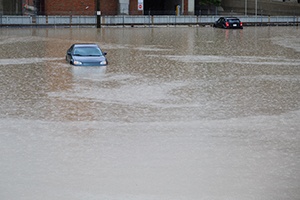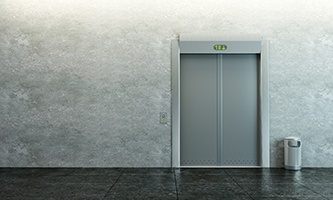 The damage and impact from the recent hurricanes has been devastating. As communities in Texas, Florida, and other areas work hard to cleanup and build, there are unfortunately people looking to take advantage of the situation. We often hear about home repair scams in the wake of disasters, but you should also keep an eye out for flood-damaged vehicles hitting the market.
The damage and impact from the recent hurricanes has been devastating. As communities in Texas, Florida, and other areas work hard to cleanup and build, there are unfortunately people looking to take advantage of the situation. We often hear about home repair scams in the wake of disasters, but you should also keep an eye out for flood-damaged vehicles hitting the market.
According to CNBC, an estimated 500,000 to 1 million cars were damaged during Hurricane Harvey. That doesn’t even include the Irma and Maria. To put this in perspective, this estimate is double the number of vehicles that were damaged in Hurricane Katrina.
Generally, a car owner would report a flood-damaged vehicle to their insurance carrier. If the car is declared a total loss, it should be taken to a junkyard. But this doesn’t always happen, sometimes these vehicles get into the wrong hands. People will take these damaged vehicles, do some cosmetic work to improve their appearance, and then put them up for sale. But flood waters can have significant impact on a car’s electrical, mechanical, and safety systems. They can also result in mold and bacteria growth in the vehicle. So even if they are given some attention and touched up aesthetically, these cars can still be in very poor condition.
Regardless of where you are in the country, this is a risk for anyone purchasing a used car. These vehicles do not just remain in the disaster-stricken regions – they can end up in any state. And they can show up for months and years after a storm. So before you purchase a used car, consider these tips to avoid making the wrong choice:
Check the car’s history. Using the vehicle identification number, you can get a vehicle history report. You can also look at the title to see date and place of transfer. Did it come from a flood-damaged area? Is there a flood or salvage title disclosure on it? The National Insurance Crime Bureau, National Motor Vehicle Title Information Center, and Carfax are resources for learning about a car’s history.
Check the vehicle for signs of potential water damage. Turn it on and look at the dashboard – do all of the lights illuminate, do the gauges appear to function, are their signs of water? Test out the car’s lighting (internal and external), turn on the air conditioning and try the heat, see if the windshield wipers work, try out the radio. Don’t just test these functions once, test them repeatedly. Look around for signs of rust, damp carpets, loose upholstery, stains/discoloration, moisture beads, etc. Carfax provides guidance for spotting a flood-damaged car, as does the Better Business Bureau. Consult resources such as these to help you check a car before purchase.
When you’re looking to purchase a used car, be prepared. Take time to research the vehicle history and give the car a close inspection!



